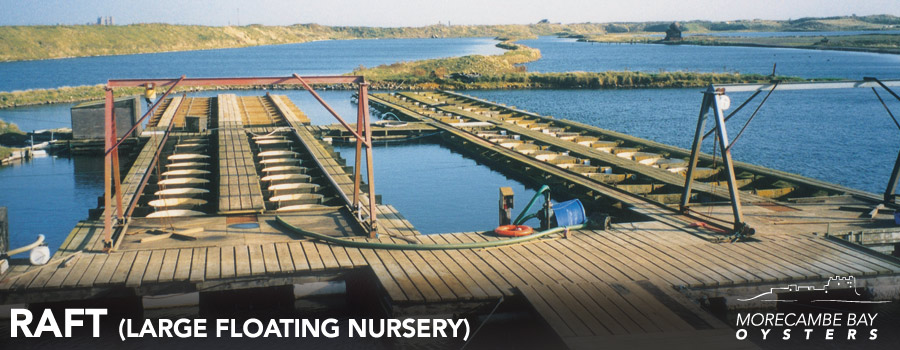
The main pond water from the circuit we are using is pumped into concrete tanks and up through mesh bottomed trays where the seed is kept in a semi-fluidised rising flow of seawater.
In the tanks the oysters are grown from around 4mm to around 12mm in length and these tanks have a seed capacity of around 5,000kg and a combined maximum flow of 1,000m3/h.
The next stage is a floating raft system for the larger seed from 10mm to 25mm in length and is much more energy efficient than the tanks as the propeller pumps work at zero head, and variations in water level are automatically compensated.
On the raft the oysters are also kept in a semi-fluidised rising flow of water up to 4,000 m3/h and a seed capacity of 20,000kg. All the seed is washed once a week throughout the year and twice a week during the summer months. The washing removes faeces and backwashes the mesh on the bottom of the tray, this and grading which can be every other week in the summer, promotes a thicker more robust shell, prevents clumping and trains the oysters to stay closed when out of water.
The shells of our oyster seed are quite dark or black even though they are washed weekly this is caused by the high densities of algae in our ponds and gradually disappears when the seed is in the sea.
During a year same size oysters can weigh differently depending on shell thickness and growth at that time.
We use a water grader to grade the small seed from the tanks, and a dry vibrating grader for the larger raft seed.
These graders have hoppers feeding seed onto them and with a full range of mesh sizes we can grade the seed remove the larger ones and once back in the water the smaller seed have every opportunity of getting the food.
